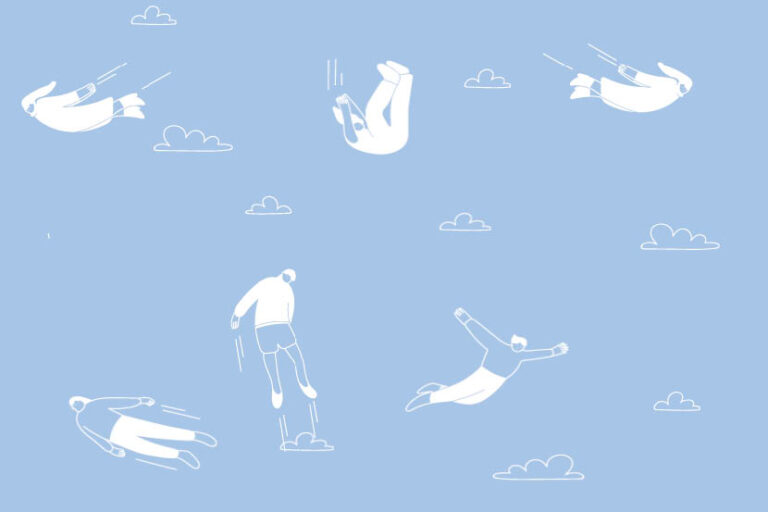
Remember pretending to be a superhero as a kid and feeling as though you could do anything? It turns out there’s something in that childlike role-play that could be key to your success as an adult
People are often naturally suited to different roles in life, but that doesn’t mean always having to stay in one lane. If you feel you’re missing a personality trait that you need to get ahead, for example, you can just go and find it – all you have to do is create an alter ego (which means “other self” in Latin). By moulding a second version of yourself you can conquer an area of your life that your current version isn’t obviously suited to. But this is the kind of thing usually reserved for the likes of rock stars and athletes, right? Not according to mindset expert and author of The Alter Ego Effect Todd Herman, who, for the past 20 years, has been advising elite sports stars and businesspeople on psychological methods to reach peak performance.
According to Todd, anyone can harness the power of an alternative personality to fit a goal they want to achieve: ‘Some people might think they aren’t able to be more creative, some perhaps believe they can’t stand up in front of others and ego Altered speak dynamically – whatever it is that people think they lack, an alter ego helps us to bypass that critical-thinking factor,’ he says. The founder and CEO of Herman Performance Systems believes the beauty of an alter ego is that it can also allow us to overcome any negative dialogue we’re used to telling ourselves about why we can’t do something, as ‘we’re using our creative imagination to gracefully and elegantly sidestep that negative self-talk because now we’re associating ourselves with a new identity’.
Who do you want to be?
It might seem slightly out of the ordinary, but multiple personalities are employed throughout life. If you think about it, people often present different versions of themselves to the world. For example, your work personality wouldn’t necessarily be at home tucking your children into bed at night, the same way your parent personality might not be in a meeting with colleagues. Different traits suit different scenarios and will take us in various directions. ‘The dangerous thing is to think you’ve got just one identity,’ says Todd. ‘No, we don’t. We’ve got many roles that we play, so the power of the alter ego is being very intentional about what role it is we’re trying to be better at.’
But we can’t just switch on desirable personality traits we’ve never had before, can we? Many of us frequently sell ourselves a certain narrative that prevents us from doing something that feels unnatural. ‘Human beings act through whatever they associate themselves with,’ says Todd. ‘Somehow, someway, we don’t see ourselves having the traits we want, so instead of acting as “ourselves” we’re using our creative imagination to release the traits we’re associating with someone and something else.’
Power of props
It’s been suggested through studies that we can change our personalities based on perception. An experiment at Northwestern University in Illinois in the US showed just that. A group of undergraduates were given a white coat to wear during an attention and accuracy test. They were split into three groups – the first group wore what they were told was a doctor’s coat, the second a painter’s coat and the third a lab coat. The group wearing the doctor’s coat had the greatest level of attention, the group wearing the painter’s coat behaved the most artistically and the group wearing the lab coat were more cautious. All three groups were actually wearing the same white coat, but the students took on the traits of the profession that they were told the coat represented. Proof that props, such as items of clothing, can signal the brain to act in a certain way.
Wear it well
American civil rights activist Martin Luther King Jr wore a pair of glasses to help him feel more distinguished when he was giving speeches. In a similar way, Todd explains how British prime minister Winston Churchill used to stand in front of a wall of hats when he was feeling discouraged and ask himself: ‘Which self should I be today?’ Props can help signal an alter ego, which ‘taps into the psychological phenomenon of enclothed cognition’. He says it’s the term used to describe how ‘human beings will adopt the traits of whatever they’re wearing and exhibit them naturally’. For example, if you don a white lab coat, you’re going to become ‘more detailed, careful and methodical because that’s what we associate with the people who wear them’.
The Northwestern University study also suggests we can adopt different traits when we want to. Eventually, they could even become part of our natural personality. ‘The face that you present to others,’ says Todd, ‘becomes the person that they believe you are. And when you find a way to identify with the strongest, most powerful version of yourself, that’s the person you start growing into.
TODD’S TOP TIPS FOR FINDING YOUR ALTER EGO
Establish why you need one
‘Human beings always act in context,’ says Todd. So start by outlining what it is that you want to achieve. Are you trying to conquer speaking on stage, do you want to get fitter, or perhaps you’re trying to become a more patient parent?
Choose your personality traits
Now you’ve decided on what you’re trying to achieve, think about what kind of characteristics would help you. Todd advises to ask yourself: ‘What traits do I want to show up with?’ How does your alter ego think? What are their defining attributes?
Visualise
It might feel like a tall order to conjure up a brand-new person in your head, so Todd suggests thinking about the people you admire. Find someone who makes you think: ‘‘I wish I was more like that.’’ Todd says: ‘It’s a great starting place because in some way you are connected to that person. It could be Katniss Everdeen, it could be Daenerys Targaryen or it could be a black mamba snake (like Kobe Bryant).’
Find your object
Put enclothed cognition to the test. Find an object that will take you into the headspace of your alter ego. Todd’s prop is a pair of glasses, but you could use anything from jewellery to an item of clothing.



















